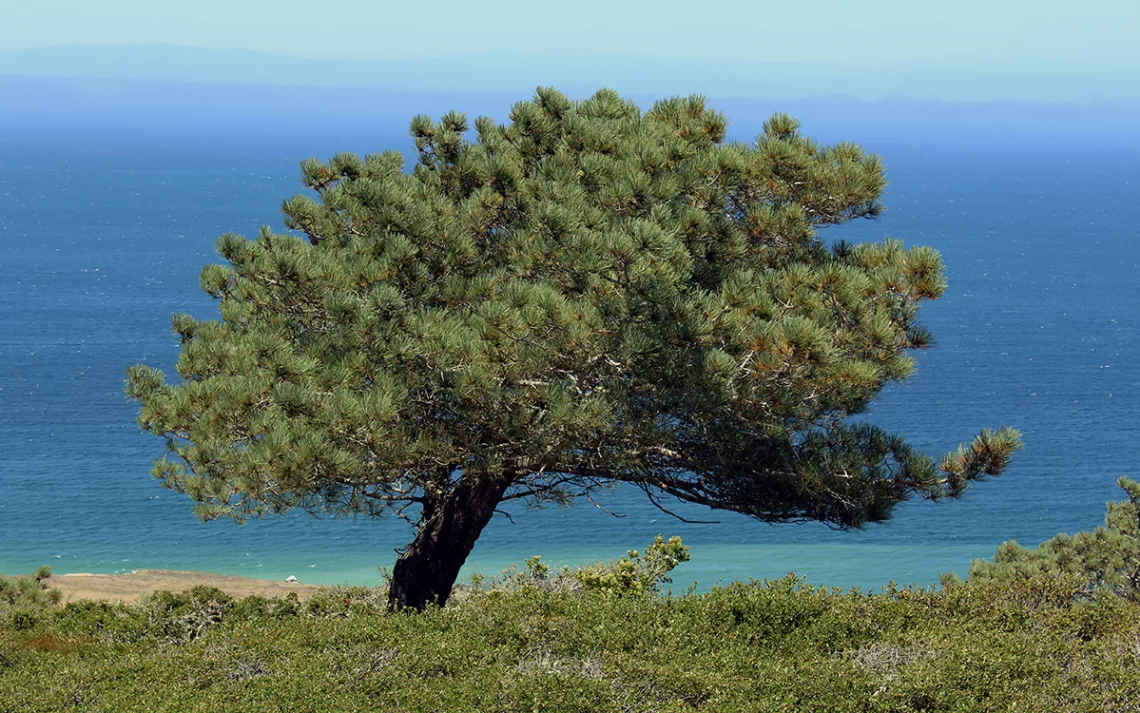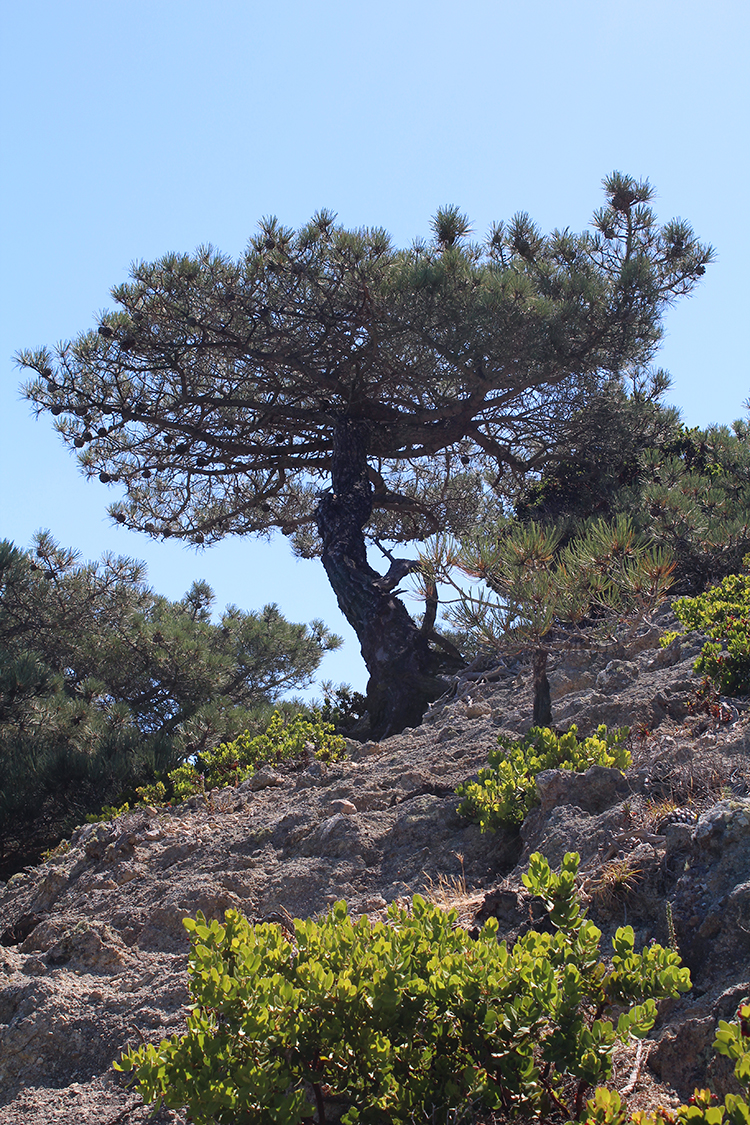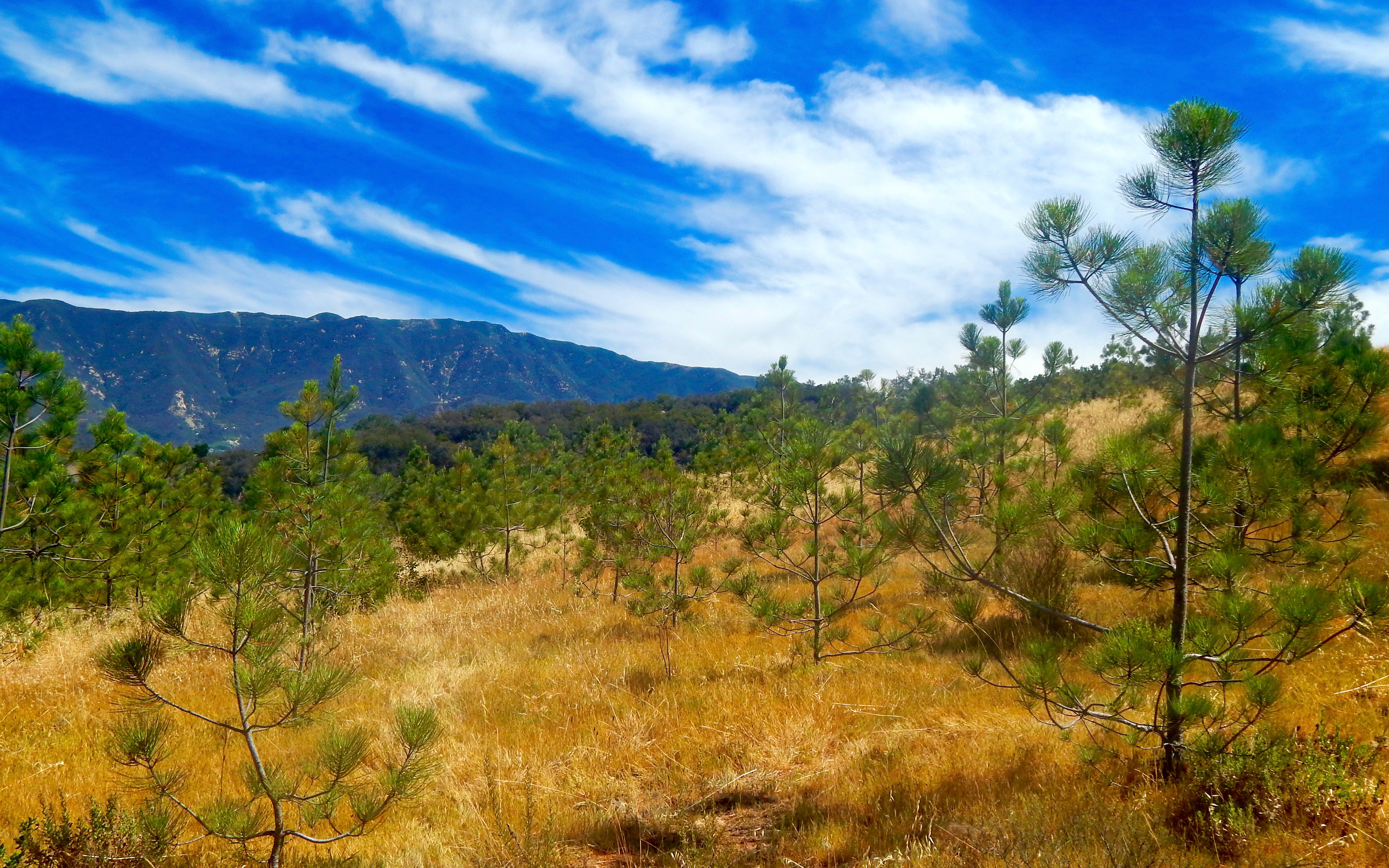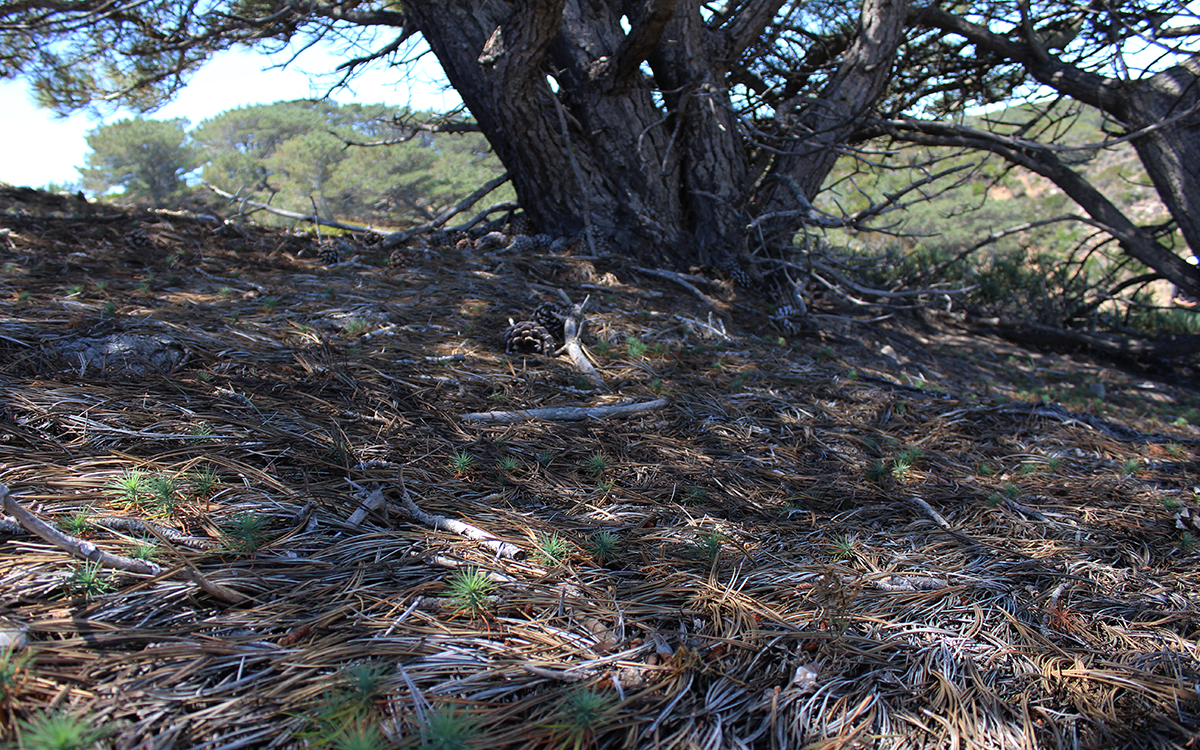Iconic, and Almost Extinct
Genetic rescue is controversial. It also could save the Torrey pine.

The Torrey pine is one of California's most iconic trees. | Photo courtesy of Jill Hamilton
The wind rips across California’s Santa Rosa Island, howling as it flattens dry grass and sage in unrelenting waves. Downhill, a small group of trees, stark against the cobalt blue of the Pacific, stand firm. Their gnarled branches barely sway, knotted up in a cloud of green needles, perpetually pinned backward like a flag in a storm.
The trees seem like an avatar of resilience in an austere environment, but Torrey pines (Pinus torreyana) are some of the most rare and critically endangered pines in the world. A century ago, the pines went through a near-extinction-level population crash when the trees, never common, were largely cleared for pastureland development. The survivors were mostly in isolated areas—like Santa Rosa Island—that had only been settled by a few trees to begin with. The number of trees has increased since then, and their blown-up bonsai appearance has made Torrey pines popular ornamental trees. But the population bottleneck caused by the near-extinction meant the obliteration of nearly all of the species’ genetic diversity

Today, the 2,000 trees on Santa Rosa are so inbred that they can’t be genetically distinguished from one another. The only other enclave of wild Torrey pines on Earth—3,400 trees in Torrey Pines State Reserve near San Diego—is in a similar situation, while also struggling with an invasion of the five-spined engraver beetle, which has reached epidemic proportions.
Genetic variation provides natural selection with an array of traits upon which it can act. Without this adaptive capacity, there’s a much higher chance that disease, pests, or sweeping ecosystem changes will wipe out one or both of the last two wild populations of Torrey pines. “This low level of genetic diversity—where you would find no within-population variation—is unprecedented,” says Jill Hamilton, a plant evolutionary genomicist at North Dakota State University.
But some genetic variation still exists in between the two isolated populations. New research led by Hamilton and detailed in a recent study published in Ecology and Evolution suggests that bringing the two together to bolster genetic diversity—a practice known as “genetic rescue”—may be the secret to saving the species.
Genetic rescue is best known for its role in the conservation of charismatic megafauna like the Florida panther, the greater prairie chicken, and the Mauritius pink pigeon. Hamilton’s experiment, though, is unusual for the sheer length of its duration. It began a decade ago, when Hamilton and her colleagues cross-pollinated the island and mainland trees. They collected the resulting pine cones and planted the seeds in a greenhouse at the Pacific Southwest Research Station, part of the U.S. Forest Service’s Institute of Forest Genetics. The seedlings were genetically verified as either pure island-type, pure mainland-type, or a hybrid with a mother from the island and a father from the mainland (hybrids with a mainland mother and an island father are planned for a later experiment). Then they were planted outside of Santa Barbara where they could all grow together under identical (a.k.a. “common garden”) conditions.

The common garden site | Photo courtesy of Jill Hamilton
Torrey pines are a long-lived, slowly growing species. The pines mature at a leisurely pace in the sandy, semi-arid soils of coastal chaparral ecosystems, relying on regular influxes of fog during the warmer months. With more rapid-growing trees, calculating reproductive fitness is relatively simple—just count how many progeny an individual makes in their lifetime. But since it can take 10 years or more before Torrey pines produce cones, Hamilton and her team used speed of growth as a stand-in.
The research team found that of the three types, trees grown from hybrid seedlings grew quickest. They also produced more cones than the trees grown from mainland and island seedlings (in fact, the island trees hadn’t even begun to produce cones). “It was kind of exciting,” Hamilton says, “because we saw, in general, that hybrids were more vigorous, produced more cones, and seemed to be doing better in that environment where we were growing them.”
Hamilton is quick to note that it isn’t yet known how a second generation of hybrids will fare. The first generation still isn’t ready to reproduce, since even once the trees start producing cones, it can take years before those cones are mature enough for reproduction. Sometimes, fitness advantages in the initial hybrid generation wane with further crossing. It’s also not known—given the millennia of evolutionary isolation between the two populations—if there are barriers to reproduction. Can the hybrids themselves reproduce? Can female mainland trees successfully mate with male island trees? These factors will all influence the effectiveness of a potential strategy.
Local adaptation is another variable. The hybrids might grow faster than the island pines on the test site because they are more genetically robust—or the island pines might just grow slow and low because there are evolutionary advantages to doing so on a windswept island. Santa Rosa Island is a place where, Hamilton notes, “the wind blows at about 40 kilometers per hour all the time.”

Young (nonhybrid) seedlings on Santa Rosa Island | Photo courtesy of Jill Hamilton
If genetic rescue proves feasible, it could be a powerful tool. As climate change progresses, it’s not known if the fog bands that are a crucial source of moisture for the Torrey pine will shift out of the range of current populations. But currently, it’s unlikely that the hybrid plants will be introduced to Santa Rosa Island or Torrey Pines State Reserve, because the convention in conservation has been to preserve distinct genetic lineage.
What is possible is that the plants could be used to establish new populations elsewhere. Hamilton contends that even though hybridization and gene flow (that is, moving genes between populations) are controversial as conservation tools, they have too much potential to be easily dismissed. “For these kind of rare, endangered species, this is what conservation should be thinking about.”
The common garden experiment is still in its first decade. Hamilton and her colleagues are prepared to patiently wait for the trees to unveil more data as they age.
“We’re still watching them grow today,” Hamilton says.
 The Magazine of The Sierra Club
The Magazine of The Sierra Club



